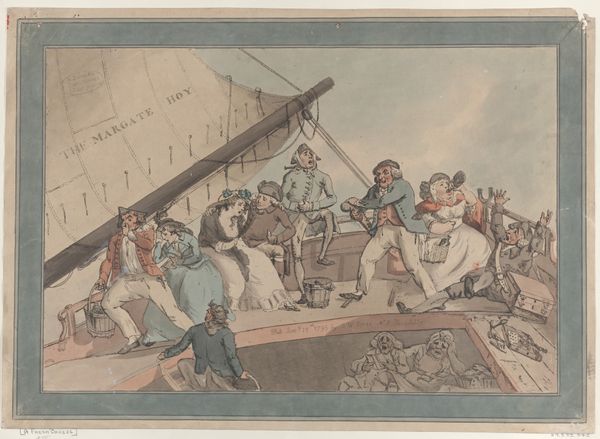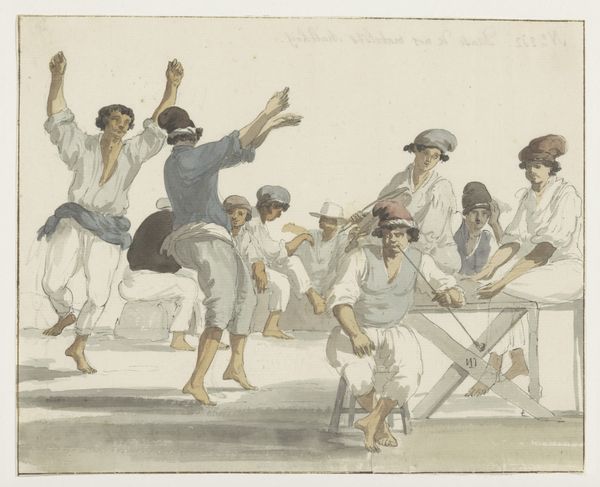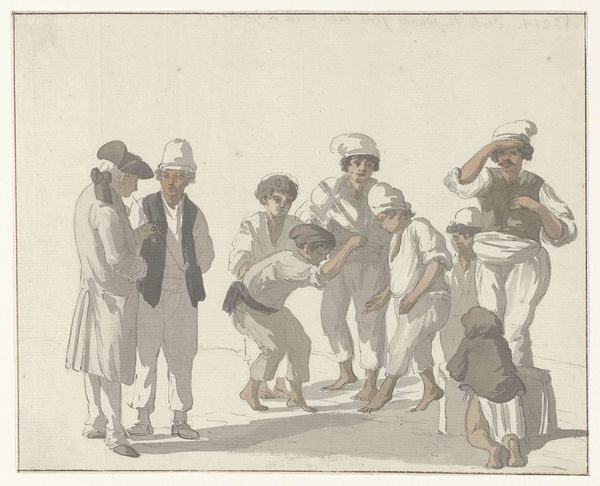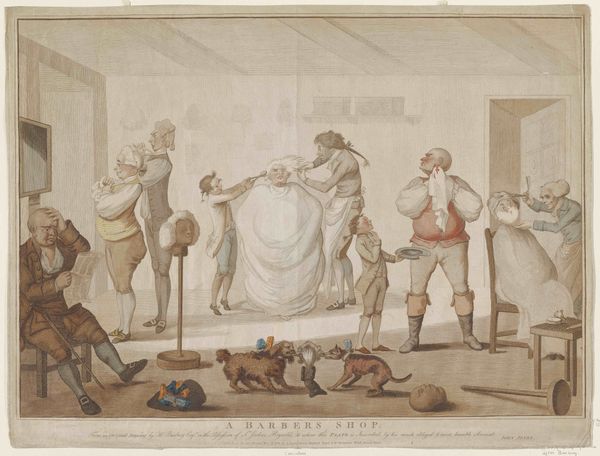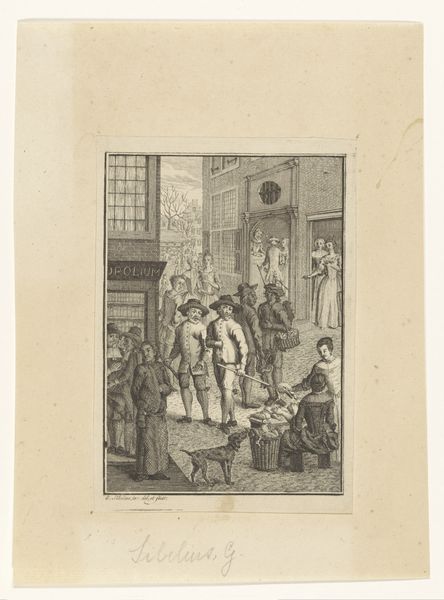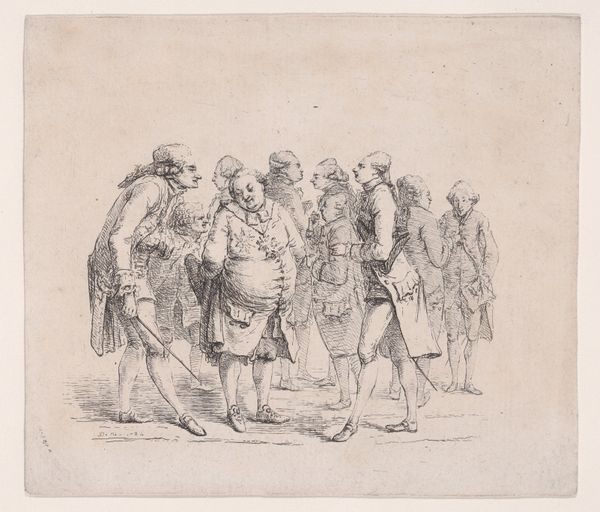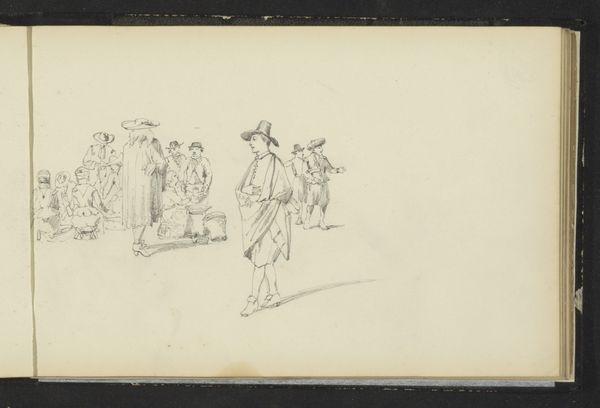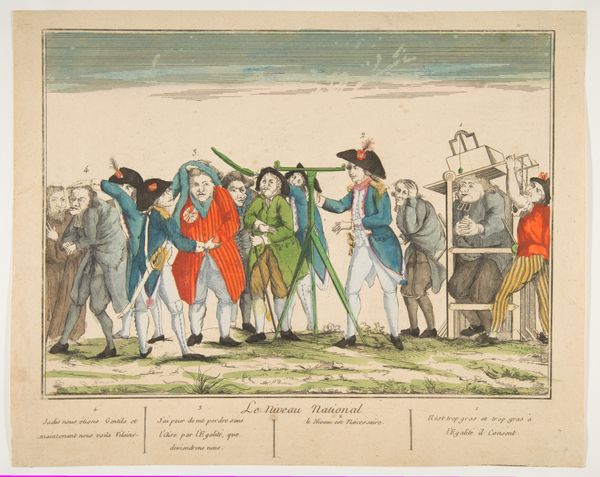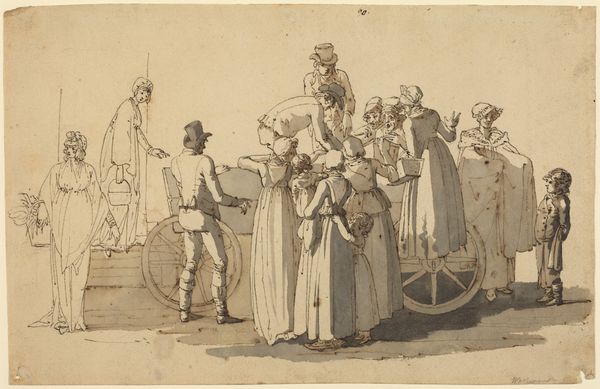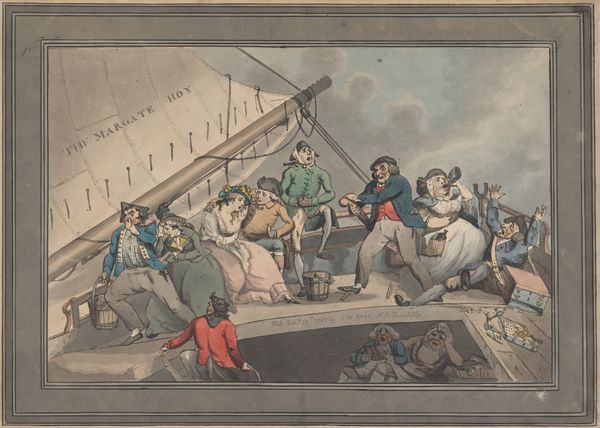
painting, watercolor
#
portrait
#
painting
#
landscape
#
watercolor
#
watercolour illustration
#
genre-painting
#
watercolor
Dimensions: height 158 mm, width 160 mm
Copyright: Rijks Museum: Open Domain
Editor: So, this watercolor by Louis Ducros, painted in 1778, is called "Gezelschap aan boord van schip l'Heureuse Marianne"—"Company on board the ship 'The Happy Marianne.'" It feels like a candid snapshot of life onboard, not romanticized at all. What jumps out at you when you look at it? Curator: The seemingly mundane scene is fascinating. Notice the prominent white flag. Flags, historically, are potent symbols. Is this a signal of truce, surrender, or merely a signal of identity for the ship? The flag, combined with the varied postures of the figures, creates a sense of ambiguous narrative. Some are working, some conversing, one reads. Is this everyday life or is there an underlying tension? Editor: That’s interesting. I hadn't considered the flag in that way. It really dominates the composition, now that you point it out. What about the clothing? Does that tell us anything about the figures represented? Curator: Absolutely. The garments act as markers of social status, occupation, perhaps even nationality. Observe the details – the hats, the cut of the coats. Ducros is providing us with a visual language to decode the hierarchies within this enclosed world. The symbols embedded within attire broadcast silent messages of belonging and distinction. Editor: So you're saying it's more than just a pretty scene; it's about power, status, and maybe even the anxieties of life at sea? Curator: Precisely! Ducros isn’t simply depicting; he's encoding layers of meaning into what might, at first glance, appear a casual, genre scene. The visual weight that clothing and the flag bear creates a complex social landscape on this "Happy Marianne." Editor: I see what you mean! The details, once noticed, reveal a whole story underneath the surface. Thanks, I’ll definitely look at similar works with more attention to detail from now on. Curator: And consider this, in a later period these semiotic conventions change—a painting from 1878 of a boat would be dramatically different in symbolism than this earlier example from 1778. Food for thought!
Comments
No comments
Be the first to comment and join the conversation on the ultimate creative platform.
